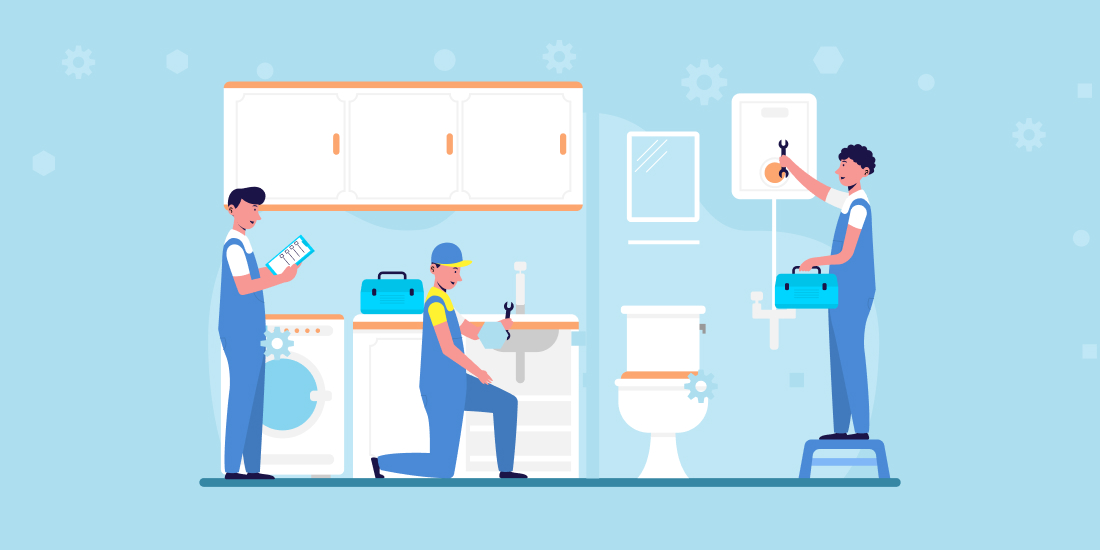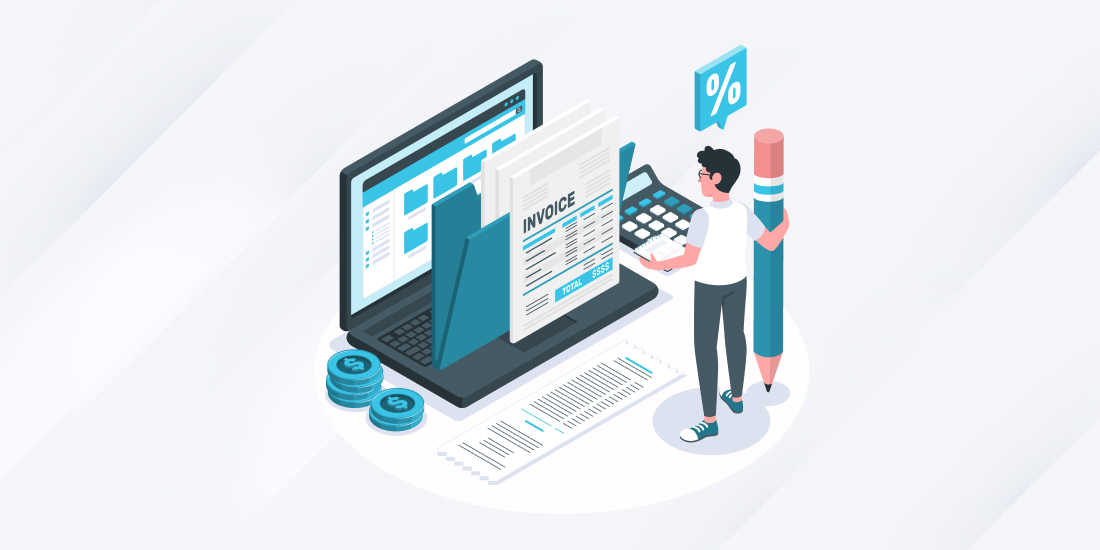For plumbing businesses, positive cash flow is like the lifeblood that keeps operations running smoothly. Ensuring a consistent stream of revenue, cash flow management helps you cover day-to-day expenses, invest in equipment upgrades, and cover overhead costs. Let’s look at a few of the top strategies to ensure that your plumbing business always has cash on hand, avoiding credit problems and financial setbacks.
1. Understand Fixed & Variable Cost
By understanding the difference between fixed and variable costs, plumbing businesses can effectively manage their expenses and allocation of resources. But how do these two costs differ? Well, fixed costs are those that remain constant regardless of sales volume, such as rent, insurance, and salaries for admin staff. Variable costs, on the other hand, increase or decrease with respect to the sales levels, such as material and labor.
As a plumbing business, you should aim to make most of your costs variable (against sales), meaning that your expenses would only increase once the sales levels hike. This ensures that your costs align closely with revenue, preventing any cash flow crunches. Plus, it is recommended that you do not increase fixed costs considerably until the breakeven point is reached with good margins.
| Fixed Costs | Variable Costs |
|---|---|
| Rent | Materials & Equipments |
| Insurance | Vehicle Expenses |
| Admin Salary | Labor Wages |
| Utilities | Card fees for customer payment processing |
| Interest payments | Permits for customers |
2. Introduce Membership Programs and Referrals
If you want to improve the cash flow of your plumbing business, introducing a membership program is a great way to go. Similar to the Amazon Prime Membership model, your plumbing business can introduce a membership plan for, let’s say $199 annual fee.
Upon subscribing, the customer is entitled to receive three free consultation visits from the contractor within the year (the normal fee for each visit is $250). Thus, instead of paying $750 ($250 x 3) for three visits at the normal rate, they only pay $199 for the same service, enhancing the perceived value of the membership.
On the other hand, the contractors are banking on the fact that these visits will generate an increased volume of business, compensating for the reduced rate per visit. In this way, membership programs provide a predictable stream of revenue for the business, as clients pay upfront for a package of services — ensuring a baseline level of income.
3. Charge an Upfront Deposit
When it comes to boosting cash flow for plumbing businesses, there’s no better way than an upfront deposit, providing an initial injection of funds before starting a project. This deposit works as a safety cushion for both the plumber and the client. For the plumber, it offsets initial expenses such as purchasing materials or tools for the project. Meanwhile, the client gets the assurance that they don’t need to pay the full amount without seeing any work progress.
For example, when plumbing businesses take on a long-term contract, they can request a deposit – usually around 10% of the total cost before starting the work. This deposit ensures a steady cash flow during the project, especially for waiting periods (when the general contractor or electrician is completing their task).
4. Offer Automated Invoicing & Payments
The quicker you send an invoice, the faster you get a cash inflow, making automated payments a must for plumbing businesses. Instead of tracking down users and pinging them to clear their long-overdue payments, you can use accounting software. Such tools automatically generate an invoice after a job is completed and send it electronically to clients.
For example, QuickBooks, an accounting software solution, offers features like automated time and expense tracking, recurring invoices, and late payment reminders — simplifying the billing process for plumbing companies. When choosing an invoice format, it’s essential to include clear details, including services rendered, payment amount, currency, due date and accepted payment methods. If you charge late payment fees, make sure to add that, too.
Here are a few tips for automating payments:
- Add payment links directly on electronic invoices to get paid quicker.
- Tweak your invoice terms to incentivize early payments (like 2% off the total cost or a complementary service/upgrade). Alternatively, implement late payment charges, such as 1% per month of the invoice amount, to incentivize prompt payment processing.
- Provide flexible payment options like credit card payments and installment plans.
5. Negotiate Longer Payment Terms
When you negotiate longer payment terms with vendors, you are able to retain more cash on hand that would otherwise be tied up in immediate payments. This approach allows you to manage your finances better and meet other financial obligations early on (paying the employees, buying plumbing tools, and covering operational expenses). Plus, longer payment terms with suppliers are great for your financial stability in the long run, maintaining a positive cash flow at all times.
6. Offer Financing Options to Customers
Customers may not always have the immediate funds available to cover the costs of plumbing services or repairs. Thus, offering financing options allows them to spread out payments over time, making services more accessible and affordable. This can lead to an increase in sales as more customers are able to afford the services they need.
Financeit, a cloud-based platform, is one such option for businesses looking to offer financing to their customers. Increasing the buying power of your clientele, this platform is all about promising loans for high-ticket items (plumbing installations or repairs). For businesses, partnering with Financeit means they can offer financing without any financial risks.
Once the platform approves a loan and the documents are e-signed, the full purchase amount is deposited into the company’s bank account within a few business days. This timely payment brings a steady cash flow for plumbing businesses, as they receive the funds upfront without having to wait for customers to make payments over time.
7. Keep Regular Track of Accounts Receivable
Regularly tracking accounts receivable helps plumbing businesses improve and manage their cash flow effectively. Since this metric keeps an eye on outstanding payments, it helps you promptly address any delays or issues. By keeping track of overdue invoices, you can also ensure that your business doesn’t face cash crunches due to delayed payments.
Plus, automating the AR account using tools like Xero helps you identify any recurring trends in late payments. For example, if certain customers continuously delay their payments, you may have to implement stricter credit terms to eliminate any negative effect on your cash flow.
8. Out Tasking Non-Core Functions
As a plumbing business, you have a lot on your shoulders, from choosing the right fixtures to repairing sanitation systems and fitting domestic appliances, to name a few. That’s why it’s important to outsource your bookkeeping services, like reconciling bank accounts and making financial reports? Yes, it does.
By outsourcing tasks such as accounting, finance, payroll, and taxes, plumbing businesses can use the specialized expertise of professionals to cash out on maximum tax deductions and protect against CRA audits. Thus, outsourcing non-core functions not only saves money in the long run but also improves your company’s bottom line by converting fixed costs into variable ones — leading to reduced labor costs (full-time employees) and overhead.
Final Thoughts
You didn’t launch your plumbing business to grapple with cash shortages, and face increased debt over time. While it’s easy to overlook the cash flow aspect of your plumbing business, it might mean the difference between increased growth opportunities and a stifled reputation. Thus, take the time to monitor your cash flow closely to ensure you always have enough cash to pay salaries and manage overheads.
And when it comes to non-core functions like bookkeeping, outsourcing is your best bet, allowing businesses to tap into the expertise of skilled professionals. Freeing up your valuable plumbing time, Transcounts offers comprehensive solutions tailored to the needs of small and medium-sized businesses. From contractor payment processing to employee payrolls and monthly bookkeeping including on-time financial statements, we’re right here so you can focus on your plumbing operations.
Contents




